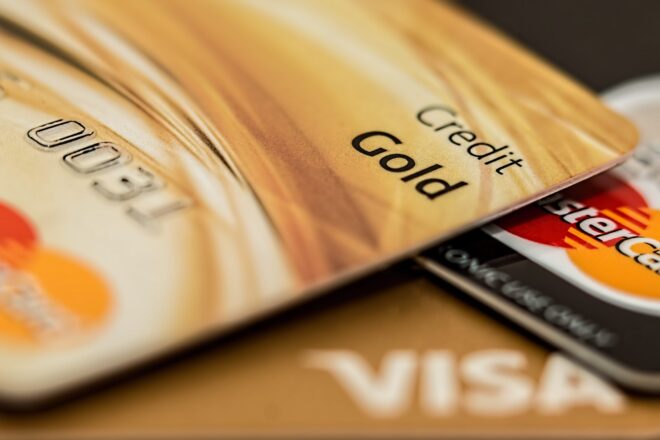
Hidden Foreign Transaction Fees on Credit Cards
Are you using a US-issued credit card for foreign transactions?
They may be charging improper, hidden Foreign Transaction Fees.
With almost the whole world under lockdown, international travel seems unlikely anytime soon. Making purchases or using the credit cards outside your country may seem to be a remote possibility. But the scary thing is that you may be paying foreign transaction fees even from your home in the US. When using your credit card to pay online. Staying in during the lockdown, many of us are making more and more purchases online. What we do not know is that our banks and credit card companies might be charging us improper hidden foreign transaction fees.
When do banks charge foreign transaction fees?
There are three basic scenarios when banks charge their cardholders foreign transaction fees:
- When American cardholders travel aboard and they withdraw cash amounts from their US dollar accounts in an ATM abroad. They withdraw from their dollar account but the ATM abroad gives them cash in local currency;
- When American cardholders use their credit card and make purchases by swiping their cards while travelling outside the US;
- When American cardholders are in the US; but purchase items online from a foreign merchant and pay using their credit card;
What are foreign transaction fees for?
Many banks and credit card companies charge a fee on the foreign transactions. They justify it as charge for converting US dollars to whatever local currency their cardholders needs to complete a purchase. What is important to know is that not all American banks charge foreign transaction fees. And out of those which do, not all of them charge the same amounts as foreign transaction fees. In fact, they may not even charge foreign transaction fees on each of the card product they offer.
How much foreign transaction fee can be charged?
Studies have shown that US banks charge around 3-4% of the converted US dollar amount. It means, for example, if a cardholder charges $100, the foreign transaction fee comes to $3-$4. It may seem to be a small amount at first. But when you spend, say, $10,000 on a holiday abroad, 3-4% of that becomes $300-400. Banks often do not clearly inform their cardholders of the many reasons why a foreign transaction fee is charged.
Who gets the foreign transaction fees?
Many banks and card companies earn portions of the foreign transaction fees. Part of this foreign transaction fee goes to the payment processor (such as Mastercard or Visa) and a part of the fee goes to the bank that issued the card. Sometimes a separate currency conversion fee is also charged by the foreign merchants or foreign websites where a US credit card is used. In essence, US credit card companies or banks charge a foreign transaction fee when a transaction is made with a website outside the US.
At times, the foreign transaction fee is called the “access” fee. This happens when the foreign merchant or website lists a dollar price on its website but the website does not inform the American purchaser that the merchant’s own bank will have to process the purchase. The foreign bank tacks on a small “access” fee as well and they get part of the foreign transaction fee.
Why didn’t you know about foreign transaction fee you might be paying?
Charges such as currency conversion fees and foreign transaction fees are usually hidden in the fine print of the banks’ Terms and Conditions. Cardholders do not read the fine print so they do not know that they may or may not be charged a foreign transaction fee. Banks try and make sure that the customers do not pay attention to the details of these charges.
Potentially, for each purchase using an American credit card, a US cardholder may be charged a foreign transaction fee twice. Firstly, by their own credit card company (the company that issued the credit card). Then a second time by the foreign bank that converted the US dollar payment to a local currency payment.
Credit card companies and banks in the US and elsewhere may even charge surcharges for credit card transactions which are not charged for cash transactions. Many a times, they add this surcharge separately and in addition to the foreign transaction fee.
What can you do about the same?
- Check your bank’s website and read the Terms and Conditions of your credit card.
- Check your bank statement for foreign transaction fees.
- Review all the purchases you made, compare the list price in US dollars with the prevailing foreign exchange rate at the time you made the purchase.
It might be a bit too confusing to wrap your head around all the terms and conditions and the calculations involved to make sense of all the charges. If that is so, you can always call up your bank and ask them to explain it to you. If you’re dissatisfied with their explanation, you may report them to the Consumer Financial Protection Bureau.
Some law offices conduct investigations to see if their clients can sue their credit card companies for these foreign transaction fees that are not only “hidden” but may also be deceptive or unfair. Lawyers investigate these foreign transaction fees to see if there are a lot of people affected by them.
- Groups of people similarly affected by these improper transaction fees can bring what is called a class action law suits to make these foreign transaction fees stop.
- They can also bring suits for the credit card companies to return the improperly charged foreign transaction fees they have charged in the past.
You can call a class action lawyer and have that lawyer evaluate whether or not you belong to the class of people affected by improper foreign transaction fees.
Fill up the form to get in touch with a class action lawyer at https://classactionnews.com/ today.
